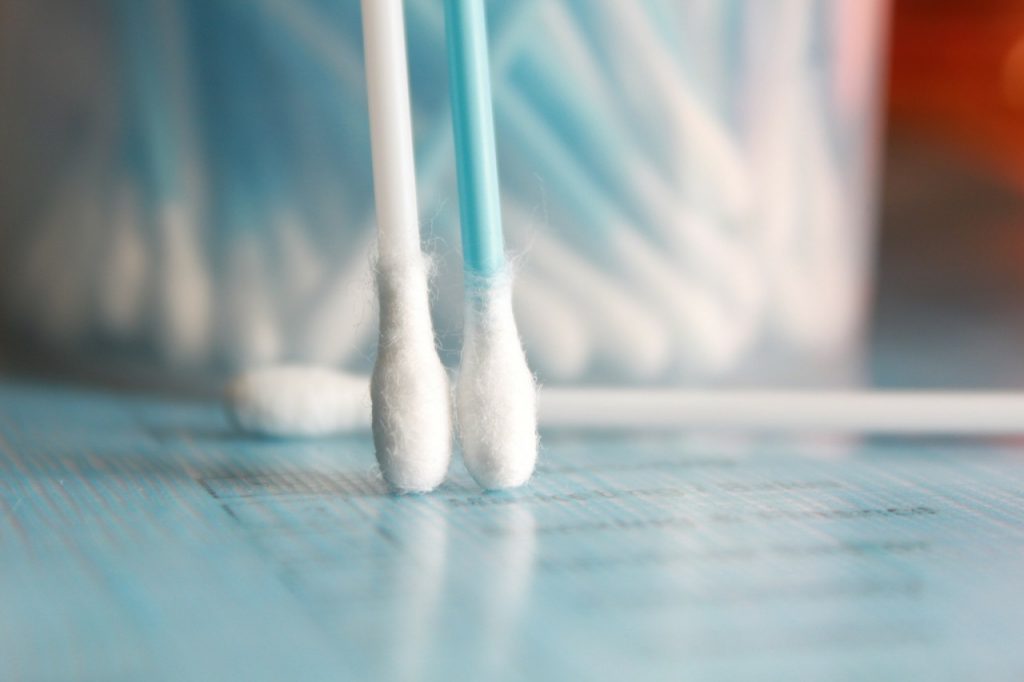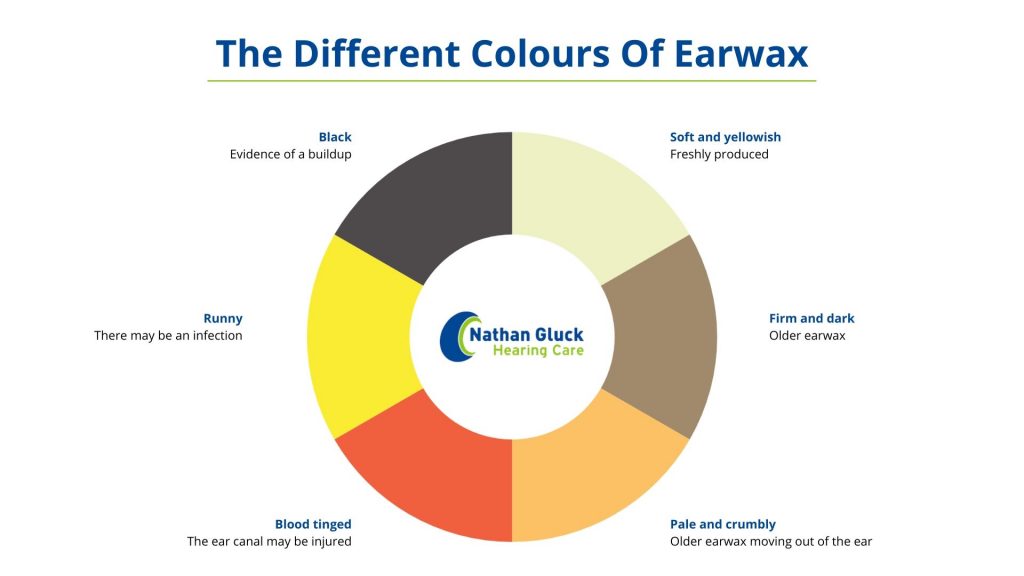Everything you need to know about earwax & microsuction procedures
When we treat earwax build ups at Nathan Gluck Hearing Care we often find ourselves answering very similar questions from patient to patient, but it is completely natural to have queries and concerns about something you haven’t experienced before – particularly when it’s in relation to your hearing and your health.
For that reason, we have broken this article down, question by question, to help you browse it as easily as possible. If there’s a question you feel we haven’t answered then please do let us know.
What is earwax?
Earwax is an essential part of the ear’s function.
One of the human body’s many naturally-occurring defence mechanisms, it is known to audiologists as cerumen. It is a sticky and oily substance produced by glands in the ear canal to protect your eardrums from all manner of dust, dirt, foreign objects and infections.
With earwax there is both a wet type and a dry type. You may not be aware of this, but the difference between the two lies in your genetics.
Fact: Earwax has a dominant and a recessive gene. The dominant gene produces wet earwax whilst the recessive gene produces the dry type. For example those from East Asia, or who have East Asian heritage, are much more likely to produce dry earwax.
Why does earwax build up?
Earwax naturally moves toward the opening of the ear and falls out on its own, however, some people’s ears simply produce too much, and we call this excessive earwax.
We all need earwax to ensure our ears are properly protected, but when there is an excess, we know that it can be frustrating, irritating and at times quite difficult for those who are experiencing a build up.

When people come to visit Nathan Gluck we often find that failed home-treatments, such as ear candling and cotton buds, are the biggest cause of earwax build up.
Although it may seem like the best course of action, and we completely understand why people would want to try this themselves, you should never try to clear excessive earwax yourself. The earwax will be pushed deeper into the ear canal and this creates a blockage that needs professional treatment to remove.
Does earwax cause pain?
At our clinic, we have seen instances of excessive earwax causing pain, so the answer from us is – yes.

In fact, earache is one of the predominant signs of excessive earwax. Others may include:
- Sudden or temporary hearing loss
- A ringing sound in the ear, called tinnitus
If unchecked by an audiologist, excessive earwax will continue to build up. This can result in further issues and potential infections, such as:
- Substantial ear pain, which can be sharp and severe in nature
- Liquid drainage from your ear
- Symptoms of fever and illness, including coughing and dizziness
Loss of hearing, ear pain and feverish symptoms does not necessarily mean you’re experiencing a buildup of earwax. They are, of course, linked to a wide variety of illnesses and problems.
That said, if you feel as though you’re beginning to experience any of these symptoms then we would still advise that you visit your local hearing care professional.
We don’t want anyone to take their precious hearing for granted.
Why is my earwax a funny colour?
There’s actually a lot that we can learn from the colour of your earwax, and during any microsuction procedure we will be analysing this to make sure there are no additional issues we need to address for you.
The two most common types, as discussed earlier, are:
- Yellow-brown, usually wet
- White-grey, usually dry
However, there may come a time when you notice a different colour. Here are a few reasons why this may be the case:
- If your earwax is soft and yellowish, this is because it is freshly produced
- On the other hand, firm and dark earwax is usually much older
- Perhaps the earwax is pale and crumbly, and in this case it is most likely older earwax that has moved out of the ear
- Now if your earwax is blood tinged, this may be an indication of an injury to the ear canal
- Runny earwax usually means that we are dealing with an infection
- Finally, if the earwax is black then there’s an earwax buildup or a foreign object in the ear canal

Why does my earwax smell?
It’s likely that the inner canal of your ear is infected in some way, but there’s no need to panic.
For an infection to thrive within the ear canal the bacteria needs to be anaerobic, which means that oxygen does not need to be present for it to survive and grow. Unfortunately, one of the characteristics of this bacteria is a distinct odour. When mixed with earwax it can be quite unpleasant.
If you’re noticing this alongside any feelings of dizziness or off-balance, then we recommend that you make an appointment with your GP, who may then refer you on to a specialist hearing clinic.
How is an earwax buildup safely removed?
As we mentioned earlier, home-treatments aren’t the answer to the problem of excessive earwax. The safe and reliable method is microsuction at the hands of a qualified hearing care professional.
Read on for more information on the microsuction procedure here at Nathan Gluck Hearing Care.
How does microsuction work?
Microsuction is a safe and painless method of removing excessive earwax deposits. It is the technique that we utilise when people come to us for help and guidance with their earwax.
Using a video otoscope we are able to take a detailed look inside the ear canal. This is an important first step as we can analyse your ear canal, checking for any infections, injuries or foreign objects before the procedure begins.
Once we have established the condition of your ear, we use a gentle microsuction device to clear the excess away. We are able to keep a detailed look at all times by using specialised magnification loupes. The microsuction device latches onto the wax and pulls at the build up. Each piece is removed until the ear canal is left free of any unnecessary earwax.
Microsuction is a painless and comfortable experience, but the sensation may be a little surprising at first – particularly if the patient is going through the procedure for the first time, or if the excess is particularly big or solid.
Is microsuction safe?

Microsuction is regarded as the safest method of ear wax removal and we make it our priority to address any doubts and worries before the procedure begins. In the hands of a trained and competent specialist there is no cause for concern.
By taking a detailed look through a video otoscope first, we are able to tailor the procedure to your specific needs. Plus, the magnification loupes ensure that we have a good view of the earwax at all times.
Other, older methods such as syringing have been denounced by the National Institute for Health and Care Excellence as potentially harmful, so we offer microsuction only at Nathan Gluck Hearing Care. Unlike syringing, microsuction is completely safe if you are suffering with a perforated eardrum.
While other procedures may use a high pressure stream of water in order to break down the excess, microsuction is performed without introducing any other substance into the ear and simply removes the wax through a vacuum process.
Microsuction is a very effective way of rejuvenating your hearing in the short term, restoring elements of your ability to hear, and potentially bringing back some acute sounds that you may otherwise have been missing out on.
What’s more, we don’t always ask our patients to use earwax softening drops in the days leading up to the procedure. This means that where available, appointments can be made for the same day.
Where should I get microsuction?
Microsuction treatments should always be performed by a reputable and trusted hearing care specialist. A quick Google search will highlight the options available locally to you.
With hearing clinics across north London, our team specialise in microsuction procedures and we have a series of COVID-19 measures in place to ensure safety.
All of our procedures are built upon the solid foundations we create by taking the time to understand you, and your experiences. This customer first approach is a vital part of ensuring our patients feel at home when they come to visit us at the clinic.
If you believe you may need microsuction, or simply have some more questions that you need to run by us, please don’t hesitate to get in touch today by clicking here.
Get in touch
If you’re concerned you may have a problem with your hearing, or you’d like to arrange a hearing test for a family member, we’re here to help.
Nathan Gluck Hearing Care,
20 Wentworth Road,
Golders Green, London,
NW11 0RP, UK